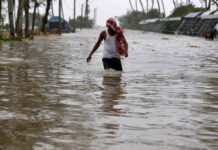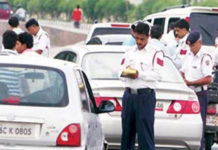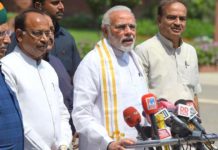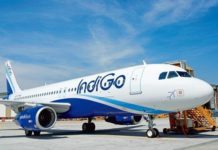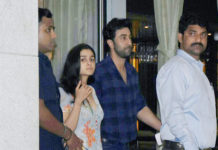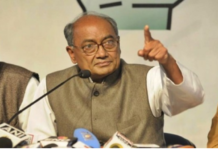A group of Indian Peace Keeping Force veterans revisits the battlefields of northern Sri Lanka, where their lives and destinies were interwoven with those of the Liberation Tigers of Tamil Eelam three decades ago
We were in Sri Lanka to remember our comrades, those we had cremated or buried here in the days of 1987-1990, when we were part of the Indian Peace Keeping Force fighting the Liberation Tigers of Tamil Eelam.
Now, we are 69-year-old veterans, and unlike other tourists who go to southern Sri Lanka, the nine of us went North from Colombo to Jaffna. The seven-hour drive via Elephant Pass, on the excellent Chinese-built double-lane Route 28, took us to places which were once the killing fields of a forgotten war with the LTTE. The countryside now has very little to remind one of the three decades of the civil war for the Tamil quest for Eelam. All traces of the war have been obliterated, except for a water tank, once used by the LTTE in Kilinochchi, as a strategic observation post and a sand-bagged machine gun nest at its top. Next door, is a war memorial, an armour-piercing shell embedded in a concrete block, a sentinel of the military force that was used to win over the LTTE.
10 Para Memorial, Palali
We started our travel through the old battlefields from Jaffna Fort. Other than the moat and its indestructible outer walls, everything inside the fort has been reduced to rubble. The IPKF had used the Fort as their headquarters, without damaging it. After a drive through the newly-built Jaffna University, we visited the football ground, where the war between the IPKF and the LTTE began on the night of October 11-12, 1987. We paid homage to 36 Indian soldiers who lost their lives on this ground. We saw the sad edifice of the charred and burnt-down Jaffna Library next door, which once housed some of the most ancient history of the South Asian region.
We then visited the well-fortified Palali Air Base, from where the IPKF was launched after the Indo-Sri Lanka Peace Accord between Rajiv Gandhi and JR Jayewardene, to pay homage at the memorial erected by the Indian Army’s 10 Para Special Forces to honour those commandos who had lost their lives during the ‘peace enforcement’ operations on the island. Palali Air Base is now the headquarters of three divisions of the Sri Lankan Northern Army.
Untouched by the civil war stands the Nallur Kandaswami Temple in the centre of Jaffna town. Soldiers of all hues are the ones who desire peace and prosperity the most, with godly intervention, and so we paid the deity Murugan a visit.
Next day, we travelled to Point Pedro, Velvedditturai and Kankesanthurai, the northernmost parts of the island, which the naval wing of the LTTE had once dominated, and which was the scene of much jostling between the LTTE and the IPKF, and later, between the Sri Lankan army and the LTTE. Point Pedro, which was once a busy fishing port, that became a strategic battlefield, has been rebuilt and is now a seaside village with little fishing. At Kankesanthurai, there is a Sri Lankan Army war memorial, which proclaims ‘Unity in diversity, is the strength of Sri Lanka’.
The next visit was to the infamous Elephant Pass, a choke point surrounded by the vast Jaffna lagoon, connecting the road and railway line between Jaffna and the rest of Sri Lanka. The railway station was the scene of some of the bloodiest battles. A stately war memorial, to honour Corporal Gamini Kularatne, awarded the Parama Weera Vibhushana (posthumous), the highest gallantry award of Sri Lanka, stands here. Further down the road is another war memorial, a large bronze tear drop bubble, symbolising the territorial integrity protected by the Sri Lankan Army.
Veterans stand at the university football grounds that was a scene of battle. The writer is at the centre, the photographer at extreme left.
We then went further East to Mullaittivu, where the LTTE was finally decimated, ending the civil war. All signs of its cataclysmic past have been erased. A large fearsome military memorial, a bronze statue of a Sri Lankan soldier with an AK-57 in one hand and the flag in the other, located in a pond with white lotus and water lilies, stands here. There are few policemen in Northern Sri Lankan, only soldiers silently standing guard over the people here.
Beyond the hustle and bustle of Mullaittivu, there is a remnant of a naval R&D centre of the LTTE, where an incredible array of ingenious engineering capability is exhibited. It has a dry dock, a wave generator, various sea-going craft, torpedoes, rocket launchers, and even miniature submarines.
Puliyankulam, a strategic town, astride the highway and railway to Jaffna, is where the 12 Jat regiment of the IPKF had fought the LTTE tooth and nail. This too had no signs of the cataclysm. Baljeet, who commanded 12 Jat at Puliyankulam, took us unerringly into the jungle to locate and pay homage at the unmarked graves of his colleagues. There were several other unmarked graves of Indian soldiers in the countryside.
We then travelled South and camped at Anuradhapura to visit Vavuniya, which was an important and very active base for the IPKF. Unfortunately, we could not gain access into this highly-fortified base, now under the Sri Lankan army.
In Colombo, we visited the well-maintained IPKF war memorial, alongside a similar memorial for Lankans, and laid wreaths for the 1,500-odd brothers-in-arms, in whose memory this monument was built by the Government of India.
The writer is a retired Wing Commander who was involved in the strategic planning of developments in Sri Lanka in 1987

 English
English


